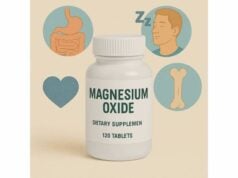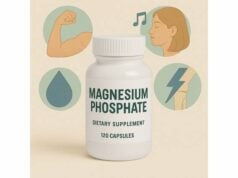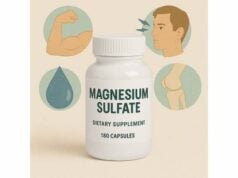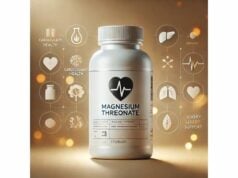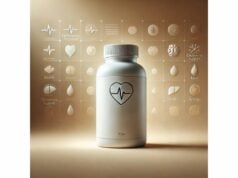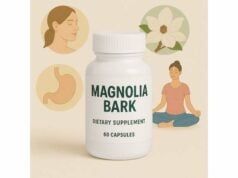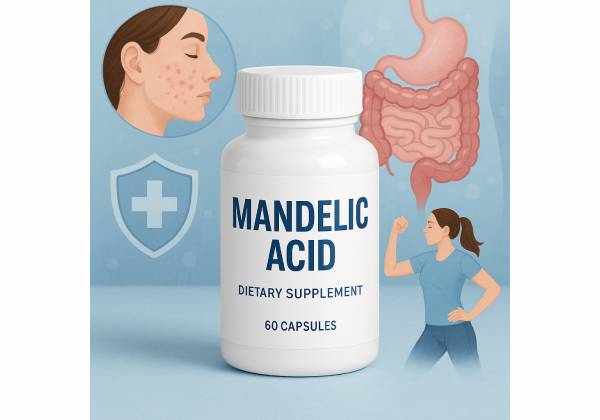
Mandelic acid is an alpha-hydroxy acid (AHA) originally derived from bitter almonds and now produced synthetically for consistency and purity. Because its molecule is larger than glycolic or lactic acid, it penetrates more slowly and distributes more evenly in the skin. That slower entry is exactly why many dermatology clinics and over-the-counter formulas reach for mandelic acid when treating breakout-prone, sensitive, or richly pigmented skin. In practice, you will see it used to smooth texture, brighten post-acne marks, soften fine lines, and support a more even tone. It also plays well in blended peels with salicylic acid, adding oil-soluble support for clogged pores while keeping irritation in check. This guide explains how mandelic acid works, where it shines, how to choose a strength and routine, what to expect, and who should avoid it. You will also find practical dosing ranges (percent strength, pH, frequency) and evidence highlights so you can use it confidently and safely.
Key Insights
- Helps reduce inflammatory acne lesions and post-inflammatory dark spots with generally better tolerance in sensitive or darker skin types.
- Slower penetration than glycolic acid often means less stinging and less risk of rebound hyperpigmentation.
- Typical leave-on dose: 5–10% (pH ~3.5–4.0) 2–4 nights weekly; in-clinic peels: 20–40% for 3–7 minutes per session every 2–4 weeks.
- Increased photosensitivity is expected; daily broad-spectrum sunscreen (SPF 30–50) is essential.
- Avoid high-strength peels during pregnancy, if you have active dermatitis or open lesions, or if you are using isotretinoin unless supervised by a clinician.
Table of Contents
- What is mandelic acid and how does it work?
- Does it really work for acne, spots, and texture?
- How to use mandelic acid step by step
- Choosing a strength and formulation that fits your skin
- Common mistakes and how to fix them
- Side effects, precautions, and who should avoid it
- Evidence check and dosage summary
What is mandelic acid and how does it work?
Mandelic acid is an aromatic AHA (alpha-hydroxy acid). Like other AHAs, it loosens cohesive bonds between dead cells in the stratum corneum, encouraging controlled exfoliation and faster cell turnover. Two properties set it apart:
- Larger molecular size: Compared with glycolic (very small) and lactic (small-to-medium), mandelic’s larger size slows penetration. The result is a gentler, more even effect with less sting and, for many people, less post-treatment irritation.
- Balanced hydro- and lipophilicity: It shows modest oil affinity relative to other AHAs. That lets it reach within pore linings better than lactic or glycolic alone, which helps with acne and visible congestion.
What you can expect at the skin level
- Texture smoothing: By accelerating corneocyte shedding, rough patches soften and light reflects more evenly from the surface.
- Tone evening: Post-inflammatory hyperpigmentation (PIH) fades as turnover normalizes and melanin-laden keratinocytes move outward more quickly.
- Breakout support: Slower, even penetration and mild antibacterial activity complement oil-control and unclogging measures. Many clinics pair mandelic with salicylic acid to cover both water- and oil-soluble targets in acne.
- Photoaging support: Repeated, well-spaced use can nudge collagen remodeling and fine-line softening over months, especially when paired with sunscreen.
Where it fits among acids
- Glycolic acid is powerful but often prickly in sensitive or richly pigmented skin.
- Lactic acid is hydrating and gentle.
- Salicylic acid (a BHA) dives into oil and is a staple for comedones.
- Mandelic acid sits in the sweet spot for reactive or darker phototypes who still want visible resurfacing with fewer side effects.
Forms you will see
- Leave-on serums (5–10%) with a pH near 3.5–4.0 for gradual, at-home resurfacing.
- In-clinic peels (20–40%) either as single-agent mandelic peels or combination peels (for example, 20% salicylic + 10% mandelic) for acne, PIH, and melasma maintenance.
- Blended nightly acids (for example, mandelic with polyhydroxy acids for sensitive skin), trading intensity for better tolerability.
Does it really work for acne, spots, and texture?
Acne (inflammatory and comedonal)
In comparative clinical studies, mandelic acid peels perform about as well as 30% salicylic acid for mild-to-moderate facial acne, with fewer adverse effects like burning and prolonged erythema. Some reports suggest salicylic has an edge for non-inflammatory comedones, while mandelic can slightly outperform for inflammatory papules and pustules—an observation consistent with its balanced oil/water behavior and steady penetration. Combination protocols that pair 20% salicylic + 10% mandelic on a repeating schedule often reduce lesion counts faster than monotherapy because they cover both pore oiliness and surface retention hyperkeratosis without dramatically increasing irritation.
Post-inflammatory hyperpigmentation (PIH)
PIH is common after acne, especially in Fitzpatrick phototypes IV–VI. By accelerating turnover and gently disrupting melanin transfer, mandelic acid helps lift residual brown marks. The lower sting profile reduces the risk of rebound hyperpigmentation, a known downside when stronger peels are used too frequently or too long on melanin-rich skin.
Uneven texture and fine lines
Regular use of 5–10% leave-on serums can visibly smooth “gritty” texture within 2–4 weeks. In-clinic peels (20–40%) spaced every 2–4 weeks for 6–8 sessions have been associated with improved smoothness and subtle softening of fine lines. These improvements depend on consistent photoprotection and moisturizer use; without them, gains are blunted and irritation risk rises.
Melasma and diffuse dyschromia
Mandelic acid is rarely the sole answer for melasma but is commonly included in multimodal plans: strict sun protection, topical brighteners (for example, azelaic acid or cysteamine), and cautious use of chemical peels. Here, mandelic’s gentler profile helps clinicians “nudge” turnover without tipping the balance toward inflammation.
Who tends to benefit most
- Sensitive or easily reddened skin wanting an AHA step without the glycolic “bite.”
- Acne-prone skin that flares with heavy, occlusive products or overly strong peels.
- Darker skin tones prioritizing even tone with a lower chance of PIH from irritation.
What results look like over time
- Weeks 1–2: Smoother feel, less visible roughness, mild “glassier” reflectance; occasional micro-flaking.
- Weeks 4–8: Noticeable improvement in PIH and texture; fewer inflamed lesions if acne-prone.
- Months 3–6: Cumulative changes in overall evenness, glow, and fine lines—assuming consistent SPF and gentle barrier care.
How to use mandelic acid step by step
Below is a conservative, skin-barrier-first plan you can adapt. If you are under a clinician’s care, follow their schedule.
1) Prep your routine (week 0–1)
- Keep a gentle, non-foaming cleanser and fragrance-free moisturizer on board.
- Start daily broad-spectrum sunscreen SPF 30–50; reapply when outdoors.
- Hold other exfoliants (glycolic, lactic, salicylic, scrubs) to reduce additive irritation.
2) Start low and slow (weeks 1–2)
- Choose a 5% mandelic serum at pH ~3.5–4.0.
- Apply a pea-sized amount to clean, dry skin every third night.
- After 10–15 minutes, apply moisturizer. If stinging persists beyond 2–3 minutes, buffer by moisturizing first, then apply mandelic, then moisturize again.
3) Build to steady use (weeks 3–6)
- Increase to every other night, then 2–4 nights weekly, as tolerated.
- If skin is oily and resilient, consider 8–10%. Keep frequency the same.
- Morning routine: sunscreen; optional niacinamide or azelaic acid can complement tone goals without compounding irritation.
4) Layer intelligently
- Do pair with niacinamide, azelaic acid, or hydrators.
- Alternate nights with retinoids to avoid over-exfoliation; many people rotate: retinoid Mon/Thu, mandelic Tue/Fri.
- Avoid same-night stacking with glycolic, lactic, peel pads, or scrubs.
5) Professional peel pathways
If you are considering in-clinic peels, common schedules are:
- Single-agent mandelic: 20–40% for 3–7 minutes, every 2–4 weeks, for 6–8 sessions.
- Combination peel (e.g., 20% salicylic + 10% mandelic): similar intervals; especially helpful for acne and PIH.
- Pre- and post-care often include sunscreen, bland moisturizers, and avoidance of retinoids or waxing for several days.
6) When to pause or adjust
- Persistent burning or stinging >5 minutes, new eczema-like patches, or prolonged redness are signs to cut frequency or stop and moisturize heavily for 3–7 days.
- If you have a history of keloid scarring, active dermatitis, or are using isotretinoin, get personalized guidance before any peel.
Practical dosing snapshot
- Leave-on: 5–10%, 2–4 nights/week (pH ~3.5–4.0).
- Peels: 20–40%, 3–7 minutes, every 2–4 weeks (medical supervision).
Choosing a strength and formulation that fits your skin
Strength vs. sensitivity
- 5%: Best for reactive, redness-prone, or first-time AHA users. Expect smoother feel with minimal sting.
- 8–10%: For combination/oily skin or prior AHA users seeking more visible glow and spot fading.
- 20–40% peels: Reserved for trained hands; faster progress on acne and PIH but require strict protocols and sunscreen.
pH matters
An acid’s pH controls “free acid” availability. For most leave-ons, a pH around 3.5–4.0 balances efficacy and tolerance. Much lower can sting and compromise the barrier; much higher under-delivers.
Vehicle and texture
- Watery serums absorb fast and suit oily or acne-prone skin.
- Gel lotions add slip and a bit of hydration, often pairing mandelic with humectants (glycerin) or soothing agents (panthenol, allantoin).
- Cream serums cushion sensitive or dry skin; they slow penetration further and reduce transient sting.
Single-acid vs blends
- Single-acid (mandelic only): Predictable, easy to dose, great for sensitive starts.
- Blends: Popular mixes include mandelic + polyhydroxy acids (PHAs) for sensitive skin, or mandelic + salicylic for acne and visible pores. Blends can be more efficient but require careful scheduling to avoid over-exfoliation.
Skin tone and phototype
- In Fitzpatrick IV–VI, mandelic is frequently preferred over stronger glycolic regimens because it is less likely to trigger post-peel hyperpigmentation when used correctly. That said, sunscreen remains non-negotiable.
Complementary actives
- Niacinamide (2–5%) supports barrier lipids and reduces blotchiness; a natural pairing.
- Azelaic acid (10–15%) helps PIH and redness; alternate use.
- Retinoids (adapalene, tretinoin) build collagen and even tone; alternate nights or separate by several days during ramp-up.
Patch testing and fragrance
- Patch test new acids behind the ear or along the jawline 24–48 hours before first full-face use.
- Fragrance-free options reduce the risk of contact dermatitis, especially during the first month.
Common mistakes and how to fix them
Mistake 1: Going too strong, too fast
Jumping from zero to nightly 10% is a classic route to redness and micro-cracking.
Fix: Begin with 5% every third night, then every other night. Consider a “moisturizer sandwich” (moisturizer → mandelic → moisturizer) during the first two weeks.
Mistake 2: Stacking acids and scrubs
Scrubs, glycolic pads, lactic toners, and same-night retinoids add up.
Fix: Choose one exfoliating step per night. Keep retinoids and mandelic on alternate evenings.
Mistake 3: Skipping sunscreen
AHAs increase photosensitivity. Without sunscreen, you may trade today’s glow for tomorrow’s spots.
Fix: Use broad-spectrum SPF 30–50 daily, reapply outdoors, and wear hats or seek shade when practical.
Mistake 4: Treating active eczema, sunburn, or open lesions
Broken barrier plus acid equals pain and pigment risk.
Fix: Heal first. Resume only when skin is quiet.
Mistake 5: Expecting peel-level results from a gentle serum in two weeks
Leave-ons are slow and steady.
Fix: Set timelines: smoother feel in 2–4 weeks, clearer tone by 6–8 weeks, and fine-line softening over 3–6 months.
Mistake 6: Using harsh cleansers
High-foaming or high-pH cleansers undermine tolerance.
Fix: Use a low-foaming, pH-balanced cleanser and a bland moisturizer (ceramides, glycerin, squalane).
Mistake 7: Peeling right before an event
Transient redness or flaking can last days.
Fix: Schedule peels 2–3 weeks before major events.
Mistake 8: Not stopping before waxing or laser
Recently peeled skin is more vulnerable.
Fix: Pause acids 5–7 days before facial waxing and per your laser provider’s instructions.
Side effects, precautions, and who should avoid it
Expected, usually mild effects
- Transient stinging or warmth for 1–3 minutes after application
- Temporary tightness and light flaking during the first 1–2 weeks
- Subtle dryness, especially around the nose and mouth
Less common, dose-related effects
- Prolonged erythema, focal irritation, and burning (often from overuse or stacking actives)
- Contact dermatitis (more likely in fragranced or essential-oil-containing formulas)
- Post-inflammatory hyperpigmentation (PIH) if irritation is significant or peels are too aggressive for your phototype
Photosensitivity
All AHAs increase UV sensitivity. Commit to daily SPF 30–50 and reapplication.
Drug and procedure interactions
- Retinoids (adapalene, tretinoin): alternate nights or reduce frequency to minimize irritation.
- Benzoyl peroxide: can be used, but many people prefer it on mornings when mandelic is used at night.
- Isotretinoin: home use of mild leave-ons is sometimes allowed, but avoid medium-to-high-strength peels unless your dermatologist clears and supervises.
- Recent waxing, microneedling, lasers: avoid acids for several days before and after, per provider guidance.
Who should avoid or seek medical guidance first
- Pregnant or breastfeeding: skip high-strength peels; ask your clinician about leave-ons.
- Active eczema, barrier disorders, open lesions, sunburn: delay until healed.
- History of keloids, poorly controlled diabetes, or immunosuppression: peels only with specialist oversight.
- Severe nut allergy: mandelic acid used in skincare is synthetic and not a food protein, but if you are highly reactive, patch test and consult first.
Allergy and patch testing
If you develop burning beyond 5 minutes, severe itching, or hive-like bumps, wash off, moisturize generously, and stop for a week. Resume at lower frequency or switch vehicles (gel/cream). Seek care for persistent reactions.
Evidence check and dosage summary
Clinical evidence snapshot
- Acne efficacy with good tolerability: In head-to-head outpatient trials, 45% mandelic acid peels performed similarly to 30% salicylic acid peels for mild-to-moderate facial acne across six sessions over 12 weeks, with fewer adverse events in the mandelic group. That fits real-world experience: mandelic’s slower penetration can make it easier to tolerate while still reducing inflammatory lesions.
- Combination peels for added speed: Protocols combining 20% salicylic + 10% mandelic reduce lesion counts and improve post-acne dyspigmentation efficiently, likely because they address oil-soluble debris and surface retention hyperkeratosis in the same visit.
- Support for texture and sensitive skin: Controlled studies of leave-on or lighter-strength regimens show improvements in skin roughness, firmness, and elasticity over 8 weeks, with good tolerance even in self-described sensitive skin.
- Guidance from dermatology references: Contemporary practice resources list mandelic acid (including 40% single-agent or 20% salicylic + 10% mandelic) among light keratolytic peeling options for acne, PIH, melasma maintenance, and photoaging—underscoring its mainstream acceptance when used within safe parameters.
Practical dosing ranges (topical)
- At-home leave-on serums:
- Strength: 5–10%
- pH: ~3.5–4.0
- Frequency: begin every third night, build to 2–4 nights/week
- Run-in period: 2 weeks at lower frequency before any increase
- In-clinic chemical peels (medical supervision):
- Strength: 20–40% mandelic acid (single-agent)
- Contact time: 3–7 minutes with visual end points; neutralize or rinse per protocol
- Schedule: every 2–4 weeks, 6–8 sessions, then maintenance as needed
- Combination option: 20% salicylic + 10% mandelic for acne/PIH
Milestones and expectations
- 2–4 weeks: smoother feel; reduced roughness; early clarity
- 6–8 weeks: visible improvement in PIH and acne frequency
- 3–6 months: incremental tone evenness and fine-line softening with steady sunscreen use
How to judge progress
- Track lesion counts (inflammatory and non-inflammatory) weekly for acne.
- Photograph PIH areas under consistent light every 2–4 weeks.
- If no meaningful change by week 8 at a tolerated dose, consider: increasing to 8–10% leave-on, adjusting vehicle, adding a retinoid on alternate nights, or discussing in-clinic peels.
Bottom line
Mandelic acid gives you much of the resurfacing and brightening people want from AHAs, with a higher likelihood of comfort and a lower risk of pigment backlash when used smartly. Start low, be patient, and make sunscreen your daily habit.
References
- Comparative study of efficacy and safety of 45% mandelic acid versus 30% salicylic acid peels in mild-to-moderate acne vulgaris 2020 (RCT)
- Randomized prospective study of low-dose isotretinoin alone and combination with salicylic acid and mandelic peel against acne tarda 2022 (RCT)
- Topical AHA in Dermatology: Formulations, Mechanisms of Action, Efficacy, and Future Perspectives 2023 (Systematic Review)
- Chemical Peels for Skin Resurfacing – StatPearls – NCBI Bookshelf 2023 (Guideline-style Reference)
- Efficacy and safety of a new peeling formulated with a pool of PHAs for the treatment of all skin types, even sensitive 2022 (Clinical Study)
Disclaimer
This article is informational and educational. It does not replace personalized advice, diagnosis, or treatment from a qualified healthcare professional. Always consult your dermatologist or licensed clinician before starting or changing any skincare regimen, especially if you are pregnant, breastfeeding, using prescription treatments, or have a chronic skin condition.
If you found this guide helpful, please consider sharing it on Facebook, X (formerly Twitter), or your favorite platform, and follow us for future updates. Your support helps us keep producing practical, evidence-based content. Thank you.

